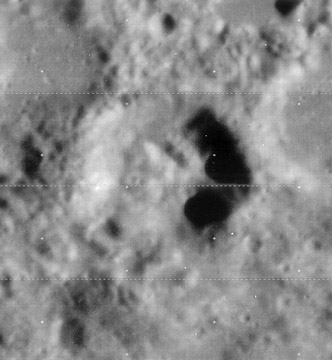Difference between revisions of "Kirchhoff"
| Line 16: | Line 16: | ||
[http://en.wikipedia.org/wiki/Kirchhoff_(crater) Kirchhoff]<br /> <br /> | [http://en.wikipedia.org/wiki/Kirchhoff_(crater) Kirchhoff]<br /> <br /> | ||
==Additional Information== | ==Additional Information== | ||
| − | Depth data from [[Kurt%20Fisher% | + | Depth data from [[Kurt%20Fisher%20Crater%20Depths|Kurt Fisher database]]<br /> |
* Arthur, 1974: 2.59 km | * Arthur, 1974: 2.59 km | ||
* Westfall, 2000: 2.59 km | * Westfall, 2000: 2.59 km | ||
Latest revision as of 02:55, 16 April 2018
Contents
[hide]Kirchhoff
|
Lat: 30.3°N, Long: 38.8°E, Diam: 24 km, Depth: 2.59 km, Rükl: 15 |
Images
LPOD Photo Gallery Lunar Orbiter Images Apollo Images
Maps
(LAC zone 43A2) LAC map Geologic map
Description
Description: Wikipedia
Additional Information
Depth data from Kurt Fisher database
- Arthur, 1974: 2.59 km
- Westfall, 2000: 2.59 km
- Viscardy, 1985: 2.59 km
Nomenclature
Gustav Kirchhoff (March 12, 1824 - October 17, 1887) was a German physicist who, with Robert Bunsen, established the theory of spectrum analysis (a technique for chemical analysis by analyzing the light emitted by a heated material), which Kirchhoff applied to determine the composition of the Sun. He found that when light passes through a gas, the gas absorbs those wavelengths that it would emit if heated, which explained the numerous dark lines (Fraunhofer lines) in the Sun's spectrum.
LPOD Articles
Bibliography
